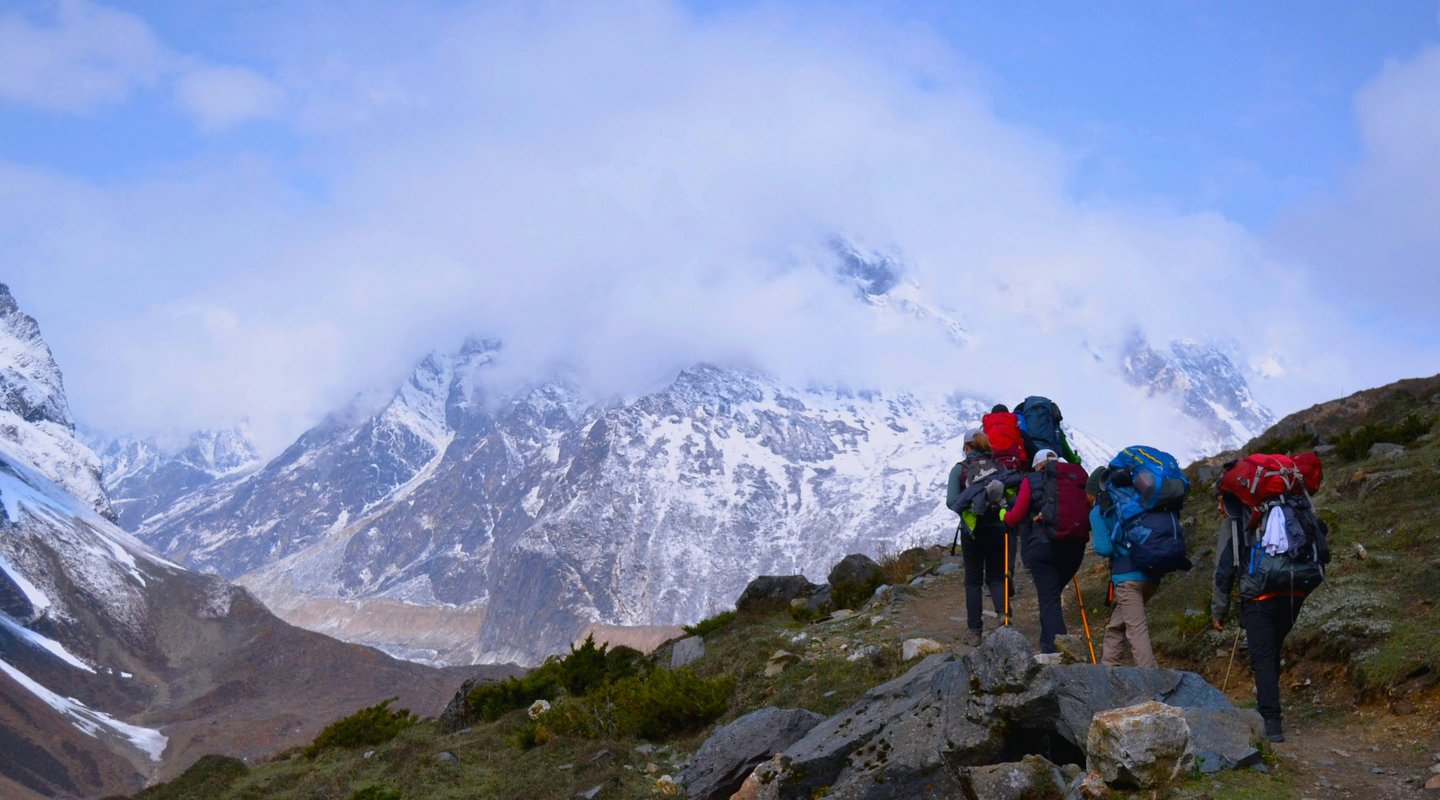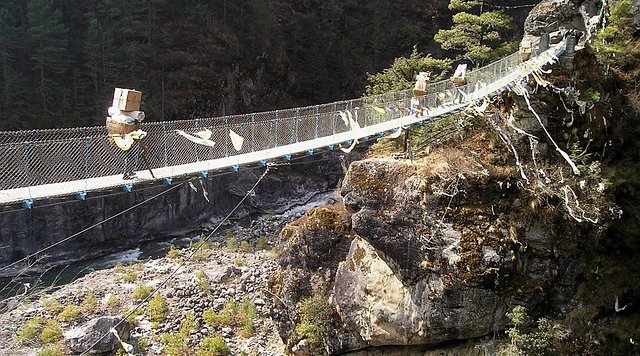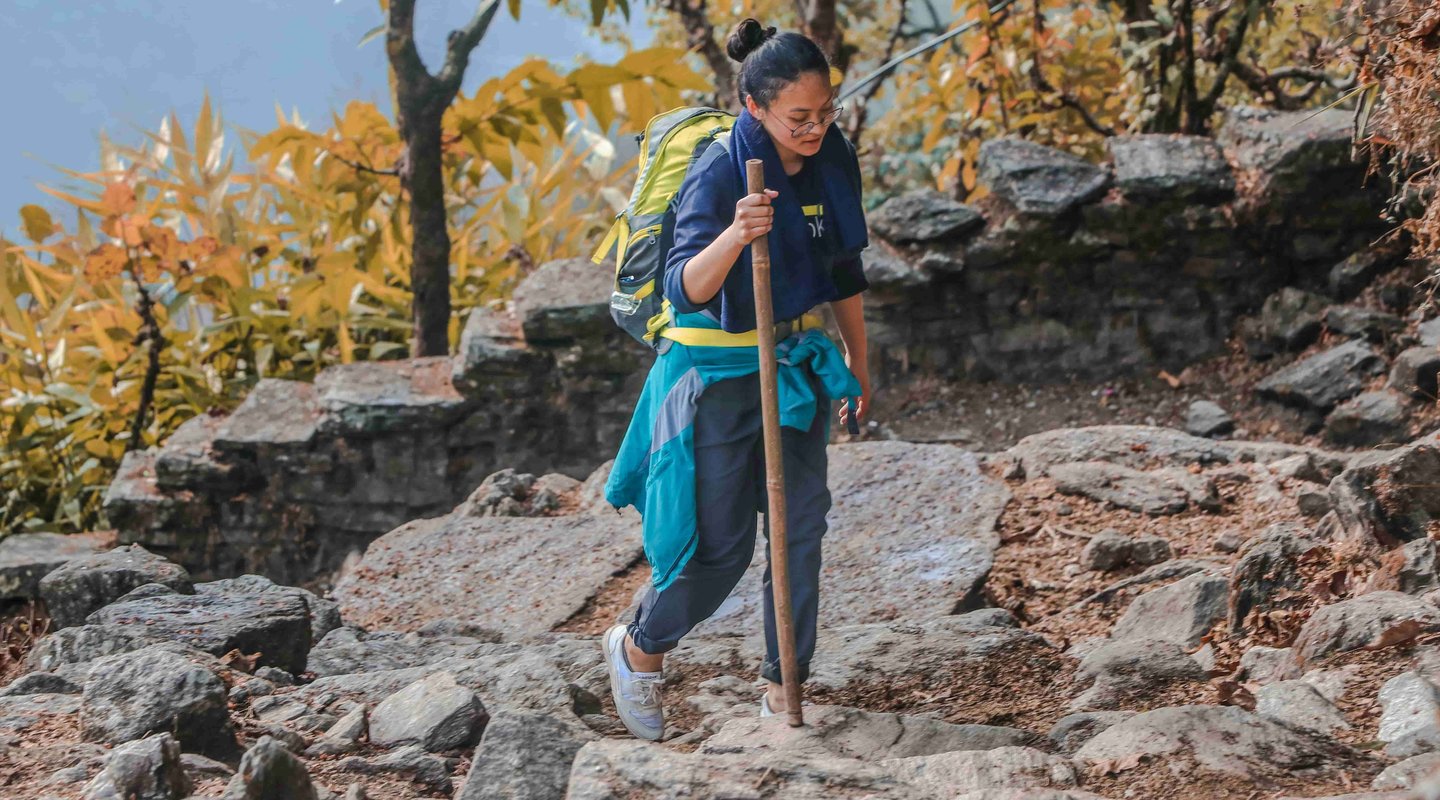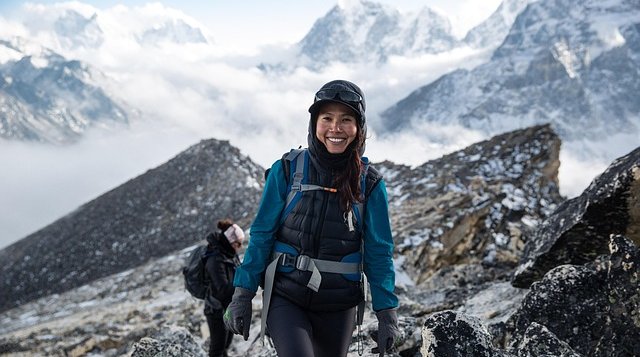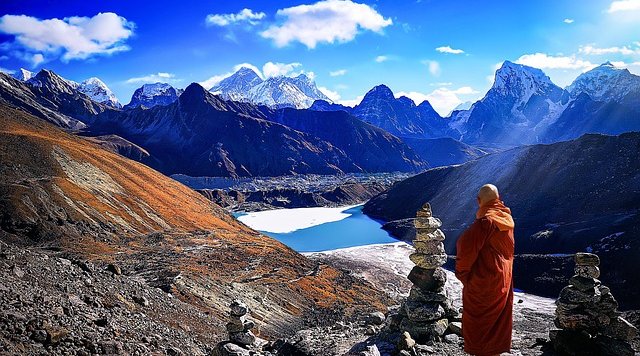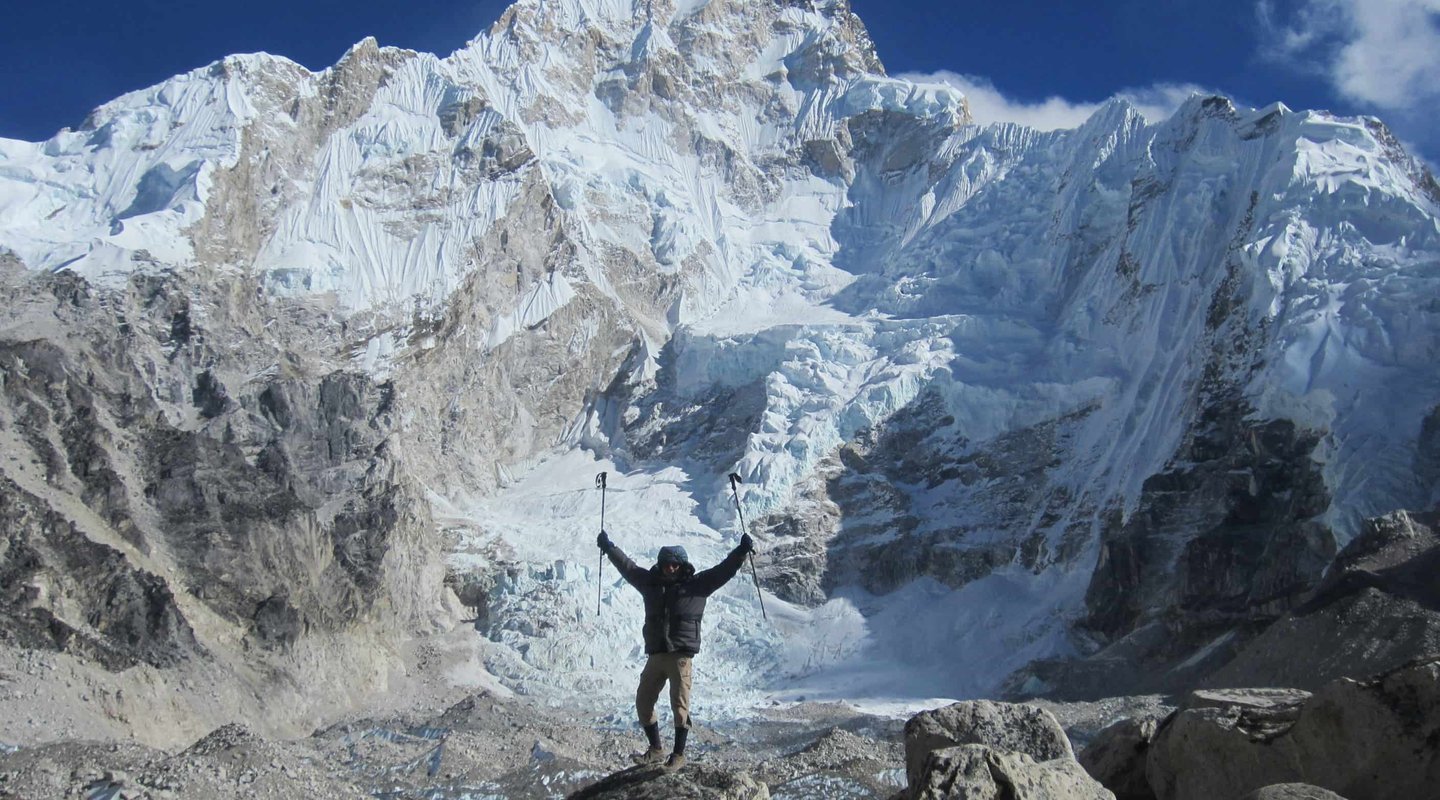The Manaslu Circuit Trek is rapidly gaining recognition as a premier alternative to Nepal's more crowded trekking routes. Offering a pristine wilderness experience, breathtaking Himalayan vistas, and an immersive journey through authentic Tibetan-influenced culture, it's a dream for many adventurers. However, understanding the financial commitment involved is crucial for effective planning. This comprehensive guide aims to demystify the Manaslu Circuit Trek cost for 2025, providing a transparent breakdown of expenses, comparing different budget levels, and offering practical tips to help you plan your unforgettable adventure.
Understanding the Average Manaslu Circuit Trek Cost in 2025
The overall cost for the Manaslu Circuit Trek typically ranges from USD 550 to USD 2,500 per person , with many sources indicating a more common range of USD 849 to USD 2,199 . Other estimates suggest USD 900 to USD 1,400 or USD 1,200 to USD 2,500. This wide range is influenced by several key factors, including the trek's duration (typically 12 to 17 days) , the size of your trekking group, the chosen trekking season, and your desired level of service and comfort.
It's crucial to understand that the "average" cost is highly variable and profoundly dependent on individual choices and preferences. This upfront clarification manages expectations, as the cost is not a fixed number but a customizable range. This prepares you for the detailed breakdown that follows, preventing any potential surprises if your preferred trekking style aligns with the higher end of the financial spectrum.
Manaslu Circuit Trek Cost Breakdown 2025: A Detailed Look
This comprehensive section provides a granular analysis of each major cost component associated with the Manaslu Circuit Trek, offering a clear and transparent overview for effective budgeting.
Mandatory Trekking Permits and Fees
Obtaining specific permits is an absolute necessity for the Manaslu Circuit Trek, a requirement stemming from its status as a restricted trekking area.
Detailed costs for each mandatory permit are as follows:
- Manaslu Restricted Area Permit (MRAP): The cost varies significantly by season. From September to November (peak season), it is USD 100 for the initial 7 days, with an additional USD 15 for each subsequent day. From December to August (off-peak season), the cost is USD 75 for the first 7 days, plus USD 10 for each extra day .
- Manaslu Conservation Area Permit (MCAP): This permit has a consistent cost of USD 25-30 .
- Annapurna Conservation Area Permit (ACAP): Required as the trek route briefly enters the Annapurna Conservation Area, costing USD 25-30 .
A crucial clarification must be made regarding the TIMS (Trekkers' Information Management System) Card. While some sources list it as a requirement , it is generally not required for the Manaslu Circuit Trek if the trip is booked through a registered trekking company. This distinction is vital to prevent trekkers from incurring unnecessary expenses or facing confusion. It will also be highlighted that the mandatory licensed guide is crucial for the successful processing and acquisition of these permits.
Guide and Porter Costs: An Essential Investment
A licensed guide is not just recommended but mandatory for the Manaslu Circuit Trek. They play critical roles in ensuring safety, navigating challenging terrain, providing cultural insights, and assisting with logistical aspects like permits.
Daily rates for these essential personnel are provided:
- Licensed Guide: Typically ranges from USD 25–40 per day.
- Guide-Porter: For those who can carry lighter loads and assist with guiding, the cost is around USD 25–30 per day.
- Porter (optional but recommended): Costs between USD 17–28 daily .
Forming or joining a group significantly impacts the per-person cost of guides and porters, as fixed costs are shared among more individuals . This is a powerful cost-saving lever for trekkers.
Accommodation and Food Expenses on the Trail
The Manaslu Circuit features typical tea-house lodging, characterized by basic rooms and shared facilities .
- Accommodation costs: Ranging from USD 3–10 per night in lower altitudes, with prices increasing to USD 7–10 as trekkers ascend to higher elevations .
- Meal costs: Typically USD 20–40 per day for three meals .
A key point is the altitude-driven price increase for both food and lodging. This phenomenon is a direct consequence of the logistical challenges and increased costs associated with transporting supplies to remote, high-altitude tea houses. This is a crucial "hidden cost" that trekkers must factor into their daily budget, as it means allocating more funds for later stages of the trek.
Transportation Costs: Getting There and Back
This subsection covers the various transportation options and their associated costs for reaching the trailhead and returning to Kathmandu.
- Kathmandu to Machha Khola/Soti Khola (Trek Start): Public bus options cost between USD 10-15 per person , while private or shared jeeps range from USD 150-250 per vehicle .
- Return from Dharapani/Besisahar to Kathmandu (Trek End): Similar pricing applies, with public buses costing USD 10-15 per person and private/shared jeeps ranging from USD 150-350 per vehicle.
Trekking Gear: Buy, Rent, or Borrow?
This section discusses the essential trekking gear required for the Manaslu Circuit, such as proper boots, a down jacket, a sleeping bag, and trekking poles.
The cost-effectiveness of various options will be explored:
- Rental costs in Kathmandu: Typically range from USD 1-3 per item per day, offering a budget-friendly alternative for specialized equipment.
- Purchase costs (new): Can range from USD 100-400+ for new, quality gear, representing a significant upfront investment.
Travel Insurance: A Non-Negotiable Expense
The critical importance of comprehensive travel insurance will be emphasized, particularly for high-altitude trekking up to 6,000m and ensuring coverage for emergency evacuation.
Typical costs for such insurance are estimated at USD 100–150 for a 2-3 week period. This expense is presented as a vital safety net rather than an optional luxury.
Miscellaneous and Hidden Costs to Budget For
This subsection sheds light on the often-overlooked expenses that can add up during the trek:
- Hot showers: Available at tea houses for USD 2-8 per use, with prices increasing at higher altitudes .
- Charging devices: Costs USD 1-5 per charge or per hour, especially in higher, more remote lodges .
- Wi-Fi access: Typically costs USD 2-8 per day or session, but availability is limited and connection quality can be poor in remote areas .
- Tips for guides and porters: Customary and expected, typically USD 10-15 per day for a guide and USD 8-12 per day for a porter.
- Snacks, bottled water, and alcoholic beverages: These personal purchases are not typically included in package deals and can add up quickly.
- Emergency buffer: An additional USD 60-110 is recommended for unforeseen expenses or potential emergency evacuation needs.
Manaslu Circuit Trek Cost Breakdown (14-Day Trek, Per Person)
- Mandatory Permits: $120–150
Includes the Manaslu Restricted Area Permit (approx. $75–100 + $10–15/day) and conservation permits (MCAP + ACAP at ~$30 each)
- Guide (Mandatory): $350–560
Licensed guide costs $25–40/day over 14 days, covering their food, lodging, and insurance
- Porter (Optional): $240–392
Porter fees are $17–28/day for 14 days; the cost can be shared between two trekkers
- Accommodation (11–12 nights): $70–140
Basic teahouse rooms at ~$5–12/night, increasing with altitude
- Food (14 days): $280–560
Three meals per day at $20–40/day, with prices climbing higher on the trail
- Transportation (Round Trip): $55–350
Options include local bus (around $55–95) or shared/private jeep ($150–350)
- Travel Insurance: $100–150
Covers high-altitude trekking and emergency evacuation
- Trekking Gear Rental: $28–42
Rent essential items like a down jacket or a sleeping bag at $2–3/day
- Miscellaneous/Hidden Costs: $150–300
Hot showers, device charging, Wi‑Fi, snacks, drinks, etc.
- Tips for Guide & Porter: $250–370
Customary daily tipping: guide $10–15/day, porter $8–12/day for 14 days
- Emergency Buffer: $60–110
To cover minor medical needs or unforeseen situations
Package Inclusions (What’s Usually Covered)
- Permits: MRAP, MCAP, ACAP are included
- Licensed English-speaking guide: Full trek duration
- Porter services: Often part of the standard package
- Accommodation: Tea houses along the trek route
- Meals: Three meals per day (breakfast, lunch, dinner) during trek
- Ground transportation: From Kathmandu → Soti Khola (start) and return from Dharapani → Kathmandu
- Kathmandu hotel nights: Typically mid-range (3-star to 5-star) before and after trek
- Company service fees & taxes: Included in package pricing
Package Exclusions (Out‑of‑Pocket Costs)
- International flights to/from Nepal
- Travel insurance, especially evacuation cover
- Trekking gear & clothing: Must bring or rent separately
- Personal expenses: Alcohol, extra snacks, bottled water (alternative: purification tablets), souvenirs
- Hot showers, Wi‑Fi, device charging: Charged per use along the trek
- Tipping: Customary for guides ($10–15/day) and porters ($8–12/day)
- Extra days/services not listed in itinerary (e.g., side trips, extended stays)
Manaslu Circuit Trek Cost Comparison: Budget vs. Mid-Range vs. Luxury
The Manaslu Circuit Trek can be experienced across various budget levels, each offering a different degree of comfort and service. Understanding these tiers helps trekkers align their expectations with their financial planning.
- Budget Trek:
- Total Cost: Approximately USD 800–1000 per person .
- Accommodation: Typically involves shared rooms in basic teahouses, offering minimal amenities .
- Transportation: Primarily relies on local buses for transfers to and from the trailhead, which are the most economical option.
- Meals: Trekkers often opt for basic teahouse meals, focusing on local Nepali dishes like Dal Bhat, or may carry some of their own snacks to cut costs.
- Guide/Porter: Group guide rates, and sharing porter services.
- Gear: Renting essential gear in Kathmandu is highly recommended to avoid the significant upfront cost of purchasing new equipment.
- Mid-Range Trek:
- Total Cost: Approximately USD 1100–1500 per person.
- Accommodation: Offers private rooms in better-equipped teahouses, providing a higher level of comfort and privacy.
- Guide/Porter: Often includes a private guide, ensuring personalized attention and flexibility. Porter services are typically part of the package.
- Meals: Three daily meals are usually included, with a wider variety of options available compared to budget treks.
- Extras: This budget level allows for occasional indulgences like hot showers and more reliable Wi-Fi, which are crucial for comfort, and typically includes emergency insurance.
- Luxury Trek:
- Total Cost: Ranging from USD 1800–3500+ for a full package .
- Accommodation: Features deluxe lodges and the best available accommodations along the route, which may still be basic compared to urban hotels but are the top tier for the region.
- Transportation: Includes private jeeps for comfortable and faster transfers, with some premium options even offering helicopter exits for specific sections .
- Meals: Gourmet meals are often provided, with a broader menu selection and higher quality ingredients where possible.
- Guide/Porter: Personalized service with dedicated guides and porters is standard, often bundled together for seamless support.
- Additional Indulgences: May encompass exclusive side trips, cultural homestays, expert-led excursions, and other high-altitude comforts, maximizing the trekking experience.
It is important to emphasize that the concept of "luxury" in the Manaslu region is relative and should not be equated with the five-star hotel experiences found in urban centers or more developed tourist destinations. While luxury packages offer upgraded basic services and enhanced comfort, they operate within the inherent constraints of a remote, off-the-beaten-path region. This means that even at the highest price point, trekkers should anticipate a level of service and infrastructure that is robust for a wilderness trek but different from conventional luxury travel.
Manaslu Circuit Trek vs. Other Popular Treks: Cost Comparison
Understanding how the Manaslu Circuit Trek's cost compares to other popular Himalayan routes helps trekkers make an informed decision based on their budget and desired experience.
Manaslu Circuit vs. Annapurna Circuit Cost
The Manaslu Circuit Trek is generally considered slightly more expensive than the Annapurna Circuit Trek. This cost difference is primarily driven by a few key factors. First, Manaslu requires a more extensive set of permits, totaling approximately USD 130-160, which includes the Manaslu Restricted Area Permit, MCAP, and ACAP. In contrast, the Annapurna Circuit typically only requires the ACAP permit, costing around USD 25. Second, the Manaslu Circuit generally spans a longer duration, typically 11-13 days, compared to the Annapurna Circuit's 6-8 days, leading to more days of guide fees, accommodation, and food expenses. Lastly, Manaslu's greater remoteness means that tea houses rely on more challenging and expensive supply chains (e.g., mules and donkeys), which can slightly increase menu prices at higher elevations compared to the Annapurna region, where jeeps can reach further into the trail.
Manaslu Circuit vs. Everest Base Camp (EBC) Cost
The Everest Base Camp (EBC) trek is generally more expensive than the Manaslu Circuit Trek. A significant contributor to EBC's higher cost is the mandatory round-trip flight from Kathmandu to Lukla, which alone can cost around $600. Manaslu, conversely, relies on more economical road transportation (buses or jeeps), though these journeys are longer and often bumpier. Accommodation and food costs are also higher along the EBC route, with tea houses ranging from $10-50 per night compared to Manaslu's $6-10, and daily meal rates of $25-30 for EBC versus $20-30 for Manaslu. A critical distinction is the guide requirement: a licensed guide is mandatory for the Manaslu Circuit due to its restricted area status, whereas a guide is optional for EBC, allowing budget-conscious trekkers to save on this expense if they choose to trek independently.
This comparative analysis positions Manaslu as a unique value proposition within the Nepal trekking landscape. While it may entail higher permit and guide costs than Annapurna, it often presents a more economical alternative to Everest Base Camp. The content should guide users to choose a trek based on their individual priorities, whether that be budget, desired crowd levels, or the depth of cultural immersion. Manaslu offers a compelling alternative for those seeking solitude and an authentic experience, away from the bustling trails of Everest, without incurring the extreme costs associated with EBC.
Money-Saving Tips for Your Manaslu Circuit Trek
Embarking on the Manaslu Circuit Trek doesn't have to break the bank. With strategic planning, trekkers can significantly reduce their overall expenses while still enjoying the full experience.
- Join a Group: One of the most effective ways to save money is to join a group trek. Fixed costs, such as guide fees and private jeep transportation, can be shared among multiple participants, substantially reducing the per-person cost . Many tour operators offer group departure dates with tiered pricing based on group size.
- Rent Gear Instead of Buying: For items like down jackets, sleeping bags, and trekking poles, renting in Kathmandu is a highly cost-effective solution. Daily rental rates are typically low (USD 1-3 per item) , saving trekkers hundreds of dollars compared to purchasing new equipment.
- Opt for Local Transport: While private jeeps offer comfort, choosing public buses or shared jeeps for transfers to and from the trailhead is significantly cheaper. Public buses cost around USD 10-15 per person for a one-way trip.
- Eat Local Meals: Sticking to traditional Nepali dishes like Dal Bhat is not only an authentic cultural experience but also a budget-friendly choice. Dal Bhat typically offers generous, often refillable, portions at reasonable prices.
- Bring Power Banks/Solar Chargers: To avoid the recurring fees for charging electronic devices at tea houses (USD 1-5 per charge/hour) , carrying a fully charged power bank or a portable solar charger is a smart investment.
- Use Water Purification Methods: Instead of consistently buying bottled water, which can be expensive and environmentally impactful (USD 1-3 per liter) , carrying a reusable water bottle and using purification tablets or a filter is a much cheaper and sustainable alternative.
- Avoid Alcohol and Unnecessary Snacks: Alcoholic beverages and imported snacks are significantly more expensive on the trail due to transportation costs. Limiting these purchases can lead to considerable savings.
- Book with Local Agencies: Engaging directly with local Nepali trekking agencies can often result in lower overall costs compared to international operators, as local companies typically have lower overheads.
- Consider Off-Peak Season Trekking: While weather conditions can be more challenging, trekking during the off-peak season (e.g., December to August, excluding March-May) can lead to lower permit fees and potentially reduced lodging costs.
Frequently Asked Questions (FAQ) About Manaslu Circuit Trek Cost
- How much does a Manaslu Circuit Trek cost per person?
The total cost for a Manaslu Circuit Trek can vary widely, generally ranging from USD 800 for a budget trip to over USD 3,500 for a luxury experience, excluding international flights. A typical mid-range package for a 14-day trek might fall between USD 1,100 and USD 1,500 per person.
- Is a guide mandatory for Manaslu Circuit Trek?
Yes, a licensed guide is mandatory for the Manaslu Circuit Trek due to its status as a restricted area. Solo trekking is not permitted, and trekkers must be part of a group (minimum two trekkers) accompanied by a registered guide.
- Are permits included in Manaslu Circuit Trek packages?
Most reputable Manaslu Circuit Trek packages typically include all necessary permits, such as the Manaslu Restricted Area Permit (MRAP), Manaslu Conservation Area Permit (MCAP), and Annapurna Conservation Area Permit (ACAP). However, it is always advisable to verify the exact inclusions with your chosen tour operator.
- What are the hidden costs of the Manaslu Circuit Trek? Common hidden costs include fees for hot showers (USD 2-8 per use), charging electronic devices (USD 1-5 per charge/hour), Wi-Fi access (USD 2-8 per day), personal snacks and alcoholic beverages, and tips for your guide and porters. An emergency buffer is also recommended.
- Is Manaslu Circuit Trek cheaper than Everest Base Camp? Generally, yes, the Manaslu Circuit Trek tends to be cheaper than the Everest Base Camp (EBC) trek. This is largely due to the absence of expensive Lukla flights (EBC's primary transportation cost) and more basic, less expensive accommodation and food options along the Manaslu route. However, Manaslu does have higher permit costs and a mandatory guide requirement.
- Can I trek the Manaslu Circuit on a budget?
Yes, it is certainly possible to trek the Manaslu Circuit on a budget by implementing several strategies. These include joining a group, opting for local transportation, renting trekking gear, eating local meals (like Dal Bhat), using water purification tablets, and avoiding unnecessary luxuries like alcohol and frequent device charging.
- What is the best time to trek Manaslu to save money?
Trekking during the off-peak season (December to August, excluding March-May) can lead to cost savings on permits and potentially lower lodging prices due to reduced demand. However, off-peak seasons may present greater weather risks and fewer services.
Conclusion
The Manaslu Circuit Trek offers a compelling and authentic Himalayan adventure, distinguishable by its remote charm and rich cultural immersion. A comprehensive understanding of its associated costs is paramount for prospective trekkers. The analysis presented in this report underscores that while the overall expenditure for the Manaslu Circuit Trek can vary significantly, ranging from budget-friendly options around USD 800-1000 to luxury experiences exceeding USD 3500, careful planning and transparent communication are key to a successful journey.
The mandatory requirement of a licensed guide and the prohibition of solo trekking fundamentally shape the cost structure, particularly for smaller groups, as fixed expenses are distributed among fewer individuals. This regulatory aspect, alongside the altitude-driven escalation of prices for food and accommodation, necessitates thorough budgeting beyond advertised package rates. Furthermore, the conflicting information surrounding the TIMS card highlights the complexities of local regulations, reinforcing the value of engaging reputable local agencies to navigate permit acquisition.
When compared to other popular treks, Manaslu presents a unique value proposition. It is generally more economical than the iconic Everest Base Camp trek, primarily due to lower transportation and accommodation costs, despite its higher permit fees and mandatory guide. Conversely, it tends to be slightly more expensive than the Annapurna Circuit, attributed to its longer duration and higher permit costs. This positions Manaslu as an ideal choice for trekkers who prioritize a less crowded, more authentic cultural experience over the absolute lowest price point, or for those seeking an alternative to the more commercialized EBC.
Ultimately, effective financial planning for the Manaslu Circuit Trek hinges on transparency regarding package inclusions and exclusions, strategic decisions like joining groups or opting for local services, and an awareness of potential hidden costs. By embracing these principles, trekkers can embark on an unforgettable journey through the Manaslu region with confidence and a clear financial roadmap.
Ready to plan your Manaslu adventure? Download our comprehensive Manaslu Circuit Trek Budget Planner to meticulously track your expenses and ensure a smooth, worry-free journey!

